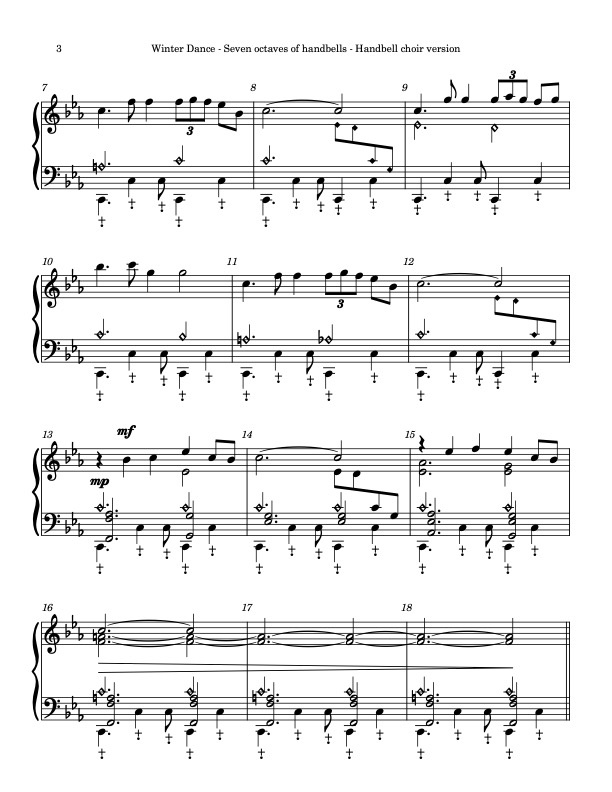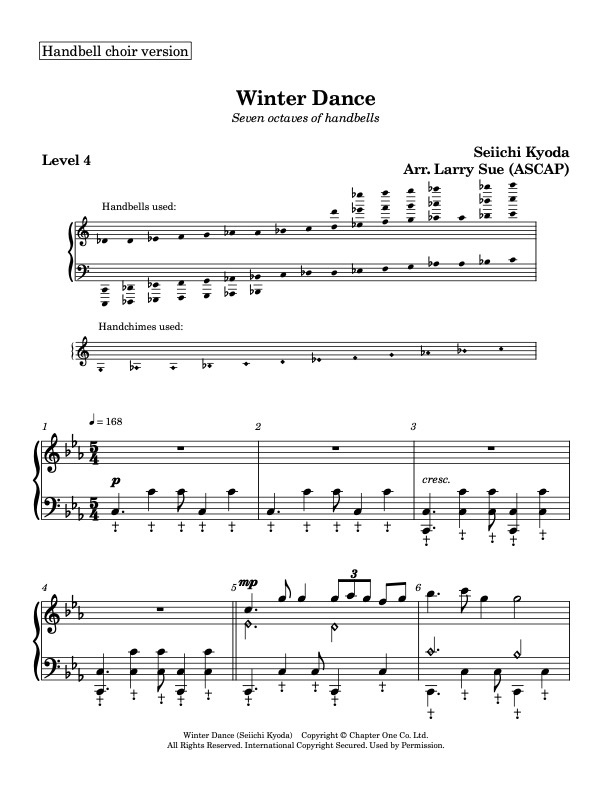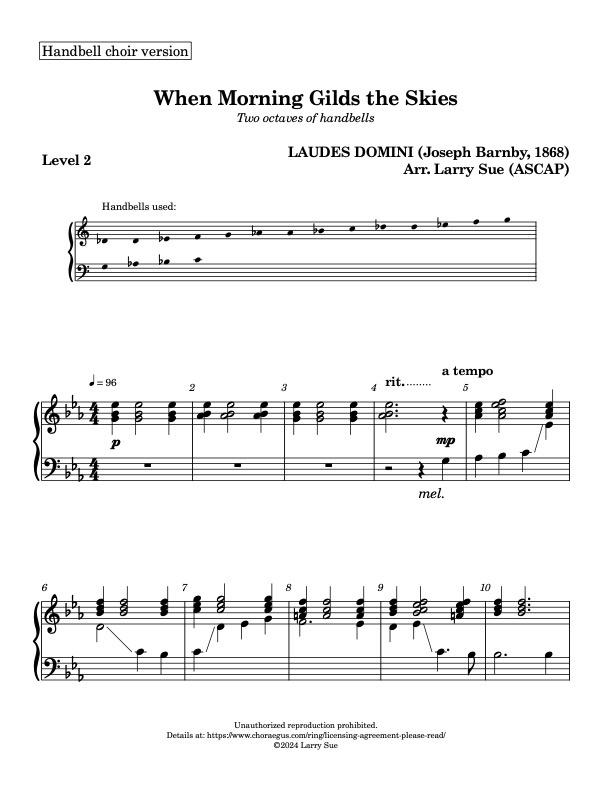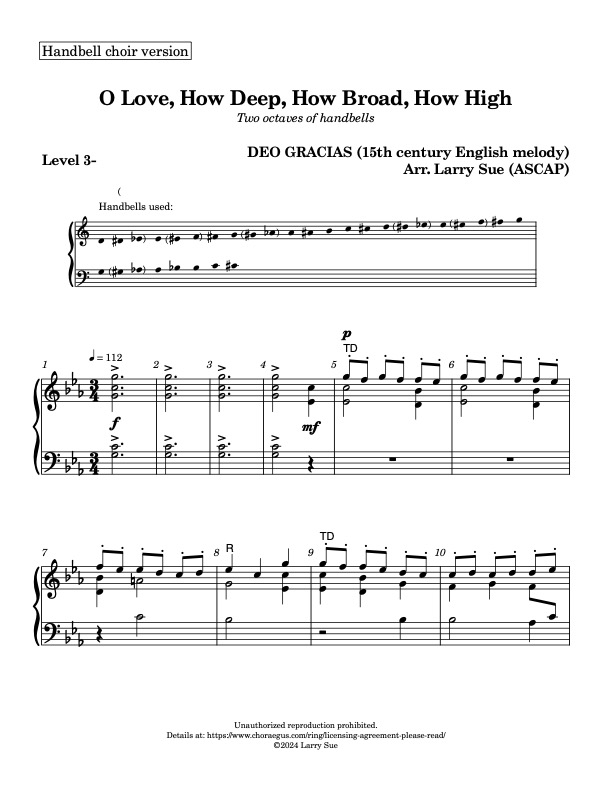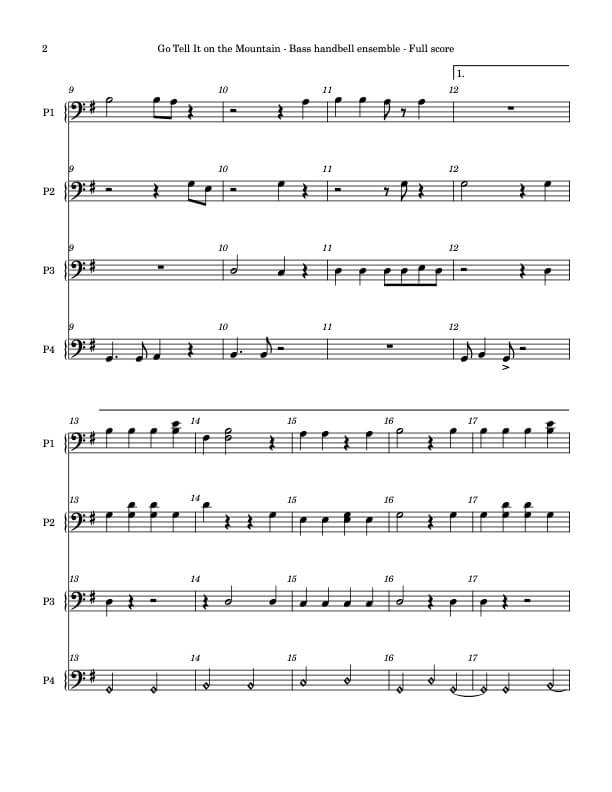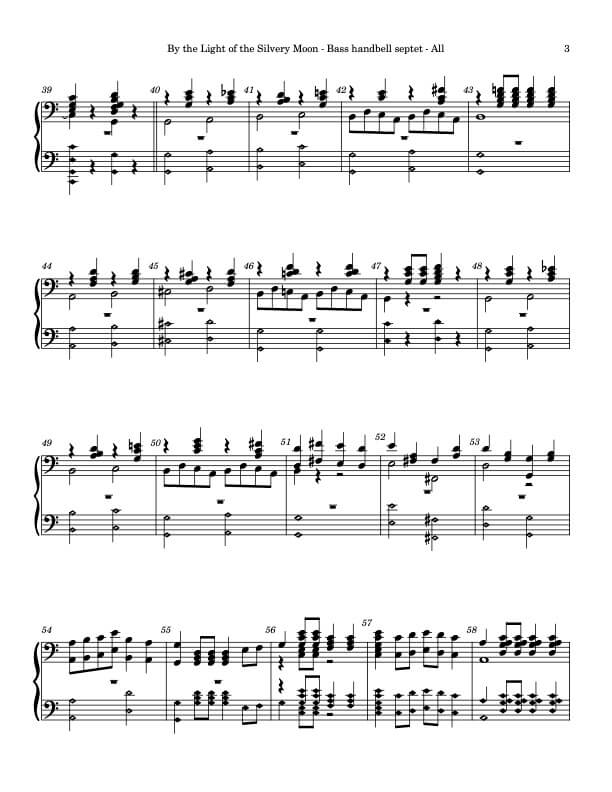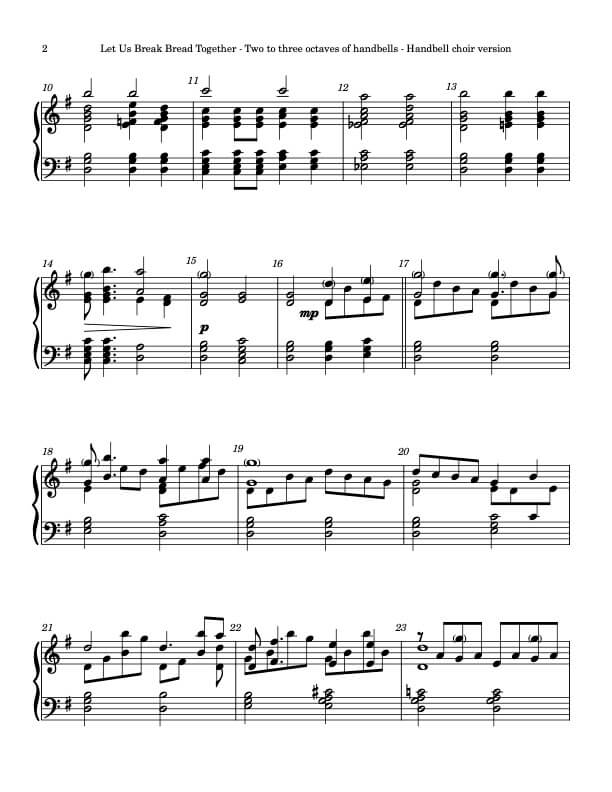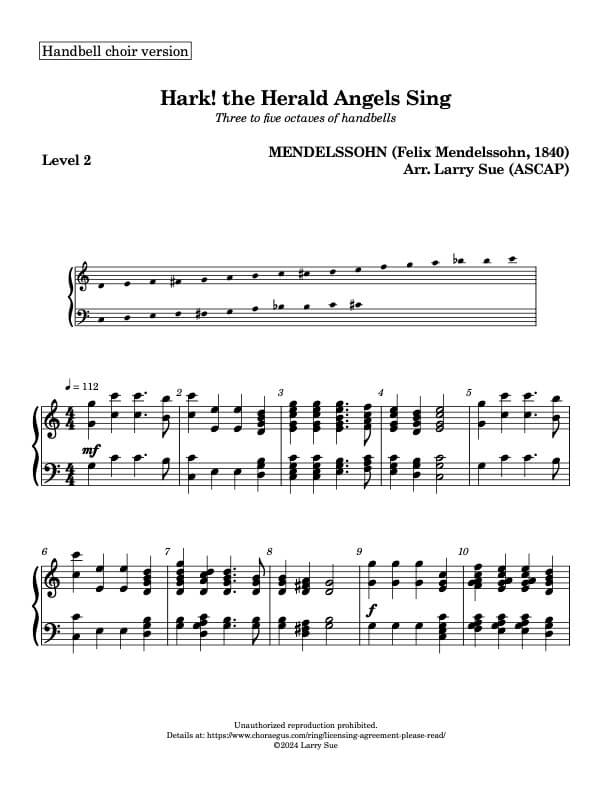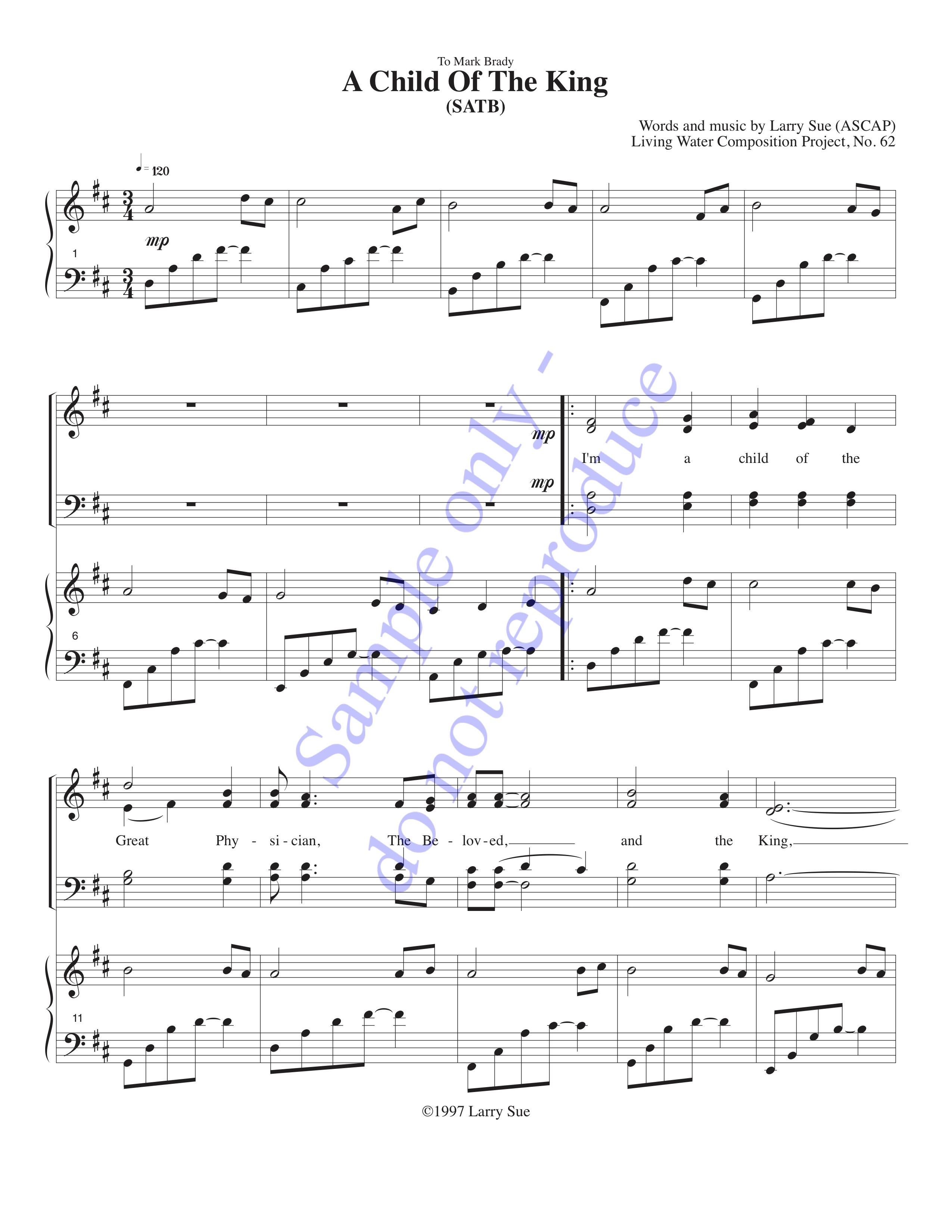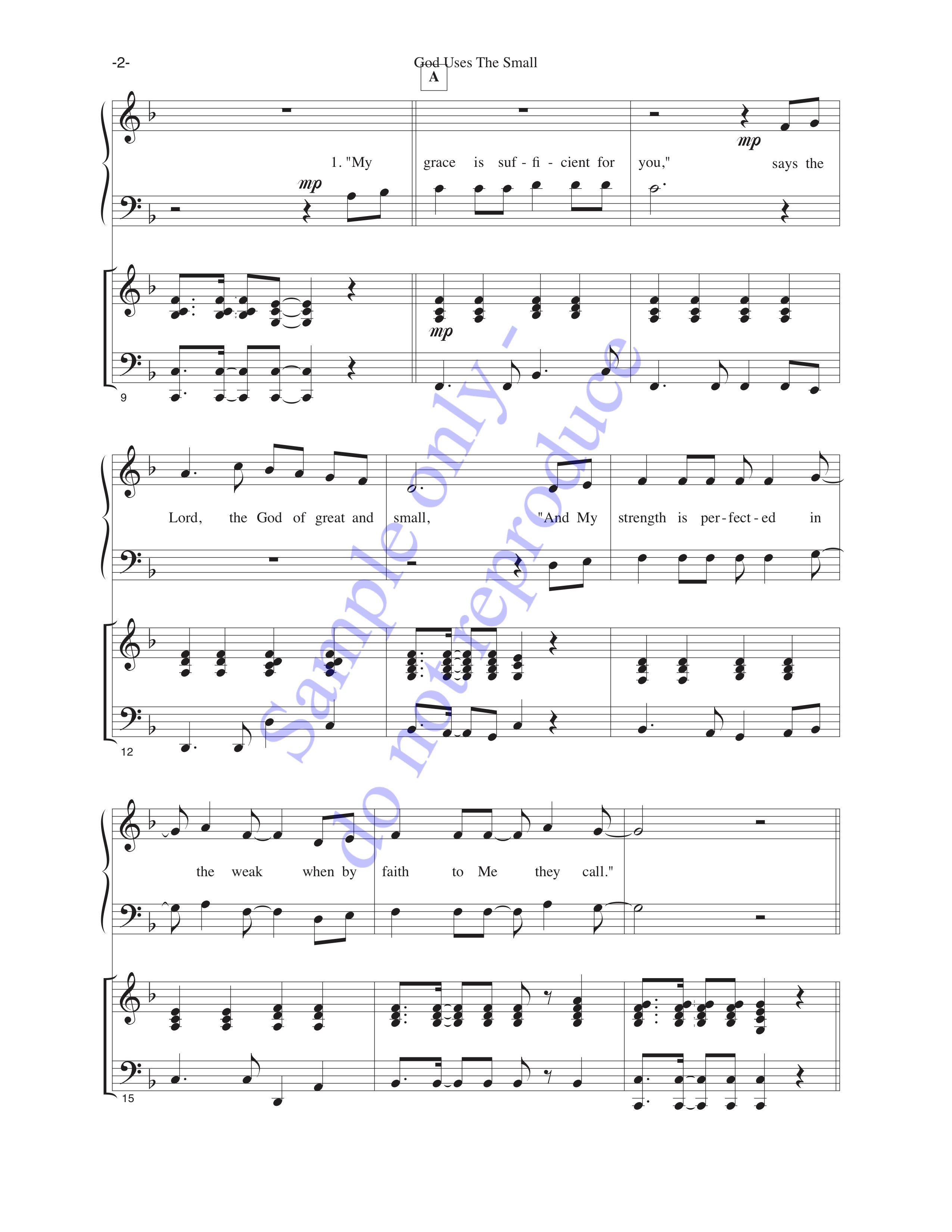Not having all the bells specified on the BUC (“Bells Used Chart”) doesn’t mean you can’t play a piece. You usually only need a bit of imagination to overcome these situations:
- One or more of your ringers in a four-in-hand ensemble isn’t comfortable with pairs of bells below G5 or C6.
- One or more of your ringers prefers/needs “left=space/right=line” assignments to play effectively.
- The range in the score exceeds the range of your set of bells. Some of our eight-bell scores have notes from G5 to A6, while you have a two-octave set of bells.
- You might have a “white keys only” set (more common in the UK than the US), and the score has some flats or sharps.
Don’t despair! Often there’s a way to transpose the set of bells used so that your set includes all of the notes in the new key. You can use the table below to find a suitable transposition based on your ensemble’s need:
- Identify the notes in the score in the “Original” row of the table. These are the only ones you need to worry about.
| -5th | f | f# | g | g# | a | a# | b | C | C# | D | D# | E | F | F# | G | G# | A | A# | B | C’ |
|---|---|---|---|---|---|---|---|---|---|---|---|---|---|---|---|---|---|---|---|---|
| -4th | g | g# | a | a# | b | C | C# | D | D# | E | F | F# | G | G# | A | A# | B | C’ | C#’ | D’ |
| -1 step | a# | b | C | C# | D | D# | E | F | F# | G | G# | A | A# | B | C’ | C#’ | D’ | D#’ | E’ | F’ |
| Original | C | C# | D | D# | E | F | F# | G | G# | A | A# | B | C’ | C#’ | D’ | D#’ | E’ | F’ | F#’ | G’ |
| +1 step | D | D# | E | F | F# | G | G# | A | A# | B | C’ | C#’ | D’ | D#’ | E’ | F’ | F#’ | G’ | G#’ | A’ |
| +4th | F | F# | G | G# | A | A# | B | C’ | C#’ | D’ | D#’ | E’ | F’ | F#’ | G’ | G#’ | A’ | A#’ | B’ | C” |
| +5th | G | G# | A | A# | B | C’ | C#’ | D’ | D#’ | E’ | F’ | F#’ | G’ | G#’ | A’ | A#’ | B’ | C” | C#” | D” |
- Select the checkboxes in the middle (“Original”) row that correspond to the notes in your score. The boxes cover the range C5-G6, with “octave above” notes having suffixed apostrophes and “octave below” notes being in lower case.
- Find the colored row of note names for the transposition you want, and ensure that you have bells for all of the selected original notes. For instance, if your original score has an Eb and you want to play the piece a fifth higher than written, you’ll need to have a Bb in your set of bells. This will give you the transposed set of pitches.
Now here’s the (slightly) tricky part. When playing the transposed bells using the original score, all you should have to do is assign them as if they’re the ones from the original BUC. Then the ensemble members play them as if they have the original bells in hand. For instance, if you’re transposing a piece from G5-G6 to C6-C7 for a quartet:
| Original | Transposed | |
|---|---|---|
| Player 1 | G5, A5 | C6, D6 |
| Player 2 | B5, C6 | E6, F6 |
| Player 3 | D6, E6 | G6, A6 |
| Player 4 | F6, G6 | B6, C7 |
So, in this example:
- Player 1 holds C6 and D6, but plays then as if they’re G5 and A5.
- Player 2 holds E6 and F6, but plays them as if they’re B5 and C6.
- Player 3 holds G6 and A6, but plays them as if they’re D6 and E6.
- Player 4 holds B6 and C7, but plays them as if they’re F6 and G6.
For a four-in-hand duet, the same idea applies, except that each person has four bells to transpose. However, once the bells are set up, playing should proceed normally within the transposition.
Also, if you’re planning to transpose a slightly larger piece (up to sixteen bells, perhaps), then if you have two C#s, you can just use the one checkbox and keep track of the octaves you’ll need.
The key to playing a transposition this was is in the phrase “as if”. Once the bells are in your hands, they don’t change, so the motions of playing the score are the same. It turns out that the biggest problem emerges if one of your ringers has perfect pitch, because people with that special gift often have extreme difficulty hearing notes that are different from what they’re reading.

